I Think Bioware Should Let The Hero Of Ferelden Return But Every Time They're In A Shot They're Cut Off
i think bioware should let the hero of ferelden return but every time they're in a shot they're cut off at the neck like the lady from powerpuff girls

and every time they try to add something to a conversation a dragon flies by roaring so you can't hear what they're saying
More Posts from Worlds-of-thedas and Others


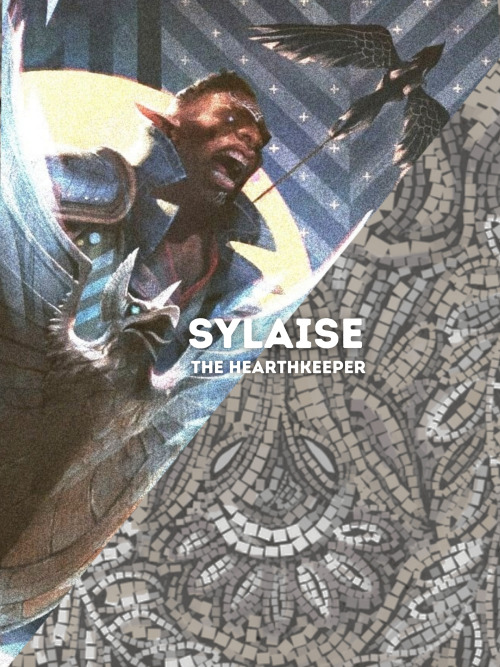




It is calming to see something familiar in another
inspo x x
love how in dragon age you sometimes click on a random rock and it tells about some fucked up group of weirdos that lived 5 centuries ago who faced the horrors of the world and died.
Dragon Age NPC Ages in DA: The Veilguard
This assumes that the 9 years between Dragon Age Inquisition and Dragon Age: The Veilguard refer to the Trespasser DLC (as in the last time Varric would have seen Solas), versus the start of Dragon Age Inquisition. This places DAV in 9:53. Characters who showed up in a previous game will not be repeated in the lists for later games they also appeared in (i.e., Leliana is under DAO, not DAI).
Read more for length & spoiler reasons. The ages listed are assuming they have not had their birthday in 9:53 yet.
Dragon Age: Origins - 9:30 - 23 years prior
Alistair Theirin - 42
Morrigan - 48
Leliana - 49
Zevran Arainai - 47
Oghren Kondrat - 65
Wynne - RIP (would've been 70)
Shale - Eternal
Sten (now Arishok) - 66
Loghain Mac Tir - 74
Anora Mac Tir - 49
Dragon Age: Awakening - 9:31 - 22 years prior
Nathaniel Howe - 52
Anders - 53
Sigrun - 47
Velanna - 47
Dragon Age 2 - 9:30-9:37 - 23-16 years prior
Hawke - 47
Carver/Bethany Hawke - 42
Fenris - ~53
Isabela - 53
Merrill - ~46
Sebastian Vael - 45
Aveline Vallen - ~58
Varric Tethras - 52
Dragon Age Inquisition - 9:41-9:44 - 12-9 years prior
Josephine Montilyet - 40
Cullen Rutherford - 41
Cassandra Pentaghast - 49
Solas - ~2000 (appears mid-40s)
Sera - 31
Vivienne de Fer - 56
Blackwall/Thom Rainier - 57
the Iron Bull - 49
Dorian Pavus - 41
Cole - Ageless (appears 20, or he may have aged into his 30s if he were made more human in DAI)
Kieran - 21

my best friend varric dragon age
Known Types of Magic
Magic is so vast that mages often put special emphasis or interest in a particular brand of magic. Sometimes this is because they have a natural affinity for it, or sometimes it’s just a matter of what their education is like.
Magic has its limits, but not many. Even still, those limits are pushed and broken—for example, World of Thedas vol. 1 stated that true teleportation is impossible, but in the Tevinter Nights story The Wigmaker Job, an elven mage does just that, transporting a room from one location to another. What we know of magic lore is constantly evolving, and when we talk about the fields of magic, or specialties if you prefer, there are only so many concrete facts and constraints.
In other words, it’s much easier to imagine whatever the hell you want. When looking at the principles of magic schools, I argue that the imagination should not be limited to in-game battle mechanics. For that reason, this post is not about just listing off all the specific abilities each school of magic can do, but rather, the concepts behind each school. The general principles. The ideas!
Keep reading
Rhythm and Breath in Dragon Age: Inquisition
Inquisition plays around with a couple recurring rhythms:
iambic pentameter (dagger skill tree, Maryden)
trochaic tetrameter (Saga of Tyrdda Bright-Axe)
the cadence from the song Hallelujah (Solas)
Many folks have already written technical comparisons of these different rhythms, but I specifically wanted to talk about how they handle breath.
Without even paying attention to the word content of these rhythms, the breath patterns help set the mood. Are my breaths regularly spaced? Am I gulping for air? Am I breathing slowly and calmly?
As we go through the different rhythms, try reading them aloud to see where your breath lands.
Iambic Pentameter
Iambic pentameter is a five (penta-) foot meter, where each foot is an iamb. An iamb is a two-syllable “da-DUM” sound, an unstressed syllable followed by a stressed syllable. So each line has 10 syllables total.
Here’s an example from the dagger skill tree, with the feet color-coded:
You leap through shadows to attack your foe
With deadly strikes that hit them from behind.
Before your target turns to face your blow,
You move to stealth, impossible to find.
If we read this aloud, we find that 10 syllables is a lot! There are very few mid-line commas, so we naturally want to breathe between lines. But each of those breaths needs to last for ten syllables. If we don’t want to pass out, we’re reading the lines a bit faster than we normally would.
The iambs add even more forward momentum. Since we need to save more breath for the second syllable in each pair, we hurry slightly faster over the unstressed syllables.
Because we keep repeating that same syllable count and stress pattern, the overall effect is one of speed and precision. This is a rogue rapidly making blow after blow after blow with their daggers, hitting every single time. This is Maryden rattling off each sentence with perfect poise and musical training. There’s no time here for thinking; no room for mistakes. The next line is going to be ten syllables too. And the next. And the next.
Trochaic Tetrameter
By contrast, the Saga of Tyrdda Bright-Axe only has 4 (tetra-) trochees (DUM-da) per line. On every other line, the final unstressed syllable is dropped (catalexis).
That’s a lot of jargon, let’s color code the feet:
Tell the tale of Tyrdda Bright-Axe
mountain maker, spirit’s bride:
Free, her people, forged in fastness
made in mountains, hardy hide.
This is a classic meter, often found in nursery rhymes and folk songs. Because there’s only 8 syllables per line (plus lots of mid-line commas), we can read each line at a casual pace, without speeding up. The catalexis adds extra emphasis to the rhyming lines, since we get to the last (7th) syllable with more breath to spend. And even within each foot, we don’t have to manage our breath as much, because the stressed syllable comes first.
This creates a comfortable rhythm that lends itself to memorization and recitation. We can easily imagine this saga being passed down beside a campfire.
Hallelujah
Since the Hallelujah cadence comes from music rather than poetry, it has an additional kind of stress, the mid-measure secondary stress.*
We don’t exactly have feet, but we can color code each measure:
I lay in dark and dreaming sleep
while countless wars and ages passed.
I woke still weak a year before I joined you.
For the first two lines, each measure is 4 syllables long, so we get 8 syllables in each line, similar to the Tyrdda poem. If we read it aloud, it’s easy to do it slowly and thoughtfully. The secondary, quieter stresses also create an echoing effect, which emphasizes that Solas is thinking about the past.
Then the last line goes absolutely bananas. It abandons the unstressed-stressed repetition and gets much longer, flying up to 11 syllables — even longer than the 10-syllable lines in iambic pentameter.
Additionally, Solas tends to glue the first two lines together, which is SIXTEEN syllables, so they sound closer to an octameter** than the tetrameter(ish) sound of the original song.
The overall effect is of someone trying to be measured and thoughtful, but partway through he gets hit with nostalgia and the lines spill out in a long breathless rush. Bro has to speak quietly so he doesn’t totally run out of air.
*Music theory sidebar: Leonard Cohen’s original version is in 12/8 time, so the secondary stress isn’t as prominent. It shows up in one or two verses, but not all. A lot of the subsequent covers, including k.d. lang’s, sound more like 6/8. That means every measure has a 2-beat count: 1-2-3 4-5-6. I think the 6/8 version fits Solas’ speech pattern a bit more. But he’s not singing, and secondary stresses are harder to place. Syllables don’t have to align 1:1 with melody notes (in fact, in Hallelujah there are several places where the syllable alignment changes from verse to verse). So someone else could easily hear a slightly different stress pattern.
**This implies a cursed version of Solas where the last line is omitted and he’s actually syncing his speech to Modern Major-General.
can i say, as i'm playing the veilgaurd, i really enjoy how every game varric's in he has a completely different relationship with each protagonist (not really spoilery under the cut but read at ur own risk)
in da2, him and hawke are BESTIES. they match each other's wit. they flirt (female hawke). they get each other into boatloads of trouble and always get each other out of it. varric never left hawkes side no matter what hawke said or did. they were equals.
in dai with him and the inquisitor, it always seemed like he held the inquisitor just a little bit at arm's length. yes, he was their friend and a part of their inner circle, but he always made it a point to mention that the inquisitor is "larger than life" and is more of a figure of legend than a person. he always gave advice the best he could, but obviously what would he know about being a "herald of andraste". they were not equals, at least if you asked varric.
in datv, he is clearly rook's mentor. any chance you get, he is always hyping up rook's abilities and leadership. making jokes if their feeling on edge. making sure they never doubt themselves. literally, any time you visit him where he's healing, he always has some real SWEET thing to say to you "are you sleeping?" "make sure you rest" "you got this kid". with varric, rook can be vulnerable. "if i hadn't made that choice, neve/harding wouldn't've gotten hurt" and varric makes sure you understand that that wasn't your fault and had to make a choice. they were not equals, at least if you asked rook. but varric would disagree.
(obviously i'm not done playing VG so idk if how i'm interpreting this is accurate BUT ALAS)
i appreciate how varric is seen differently in each game he's in, it makes him always really interesting to watch throughout each game!
Andrastian Statues

The purpose of this collection of statues is to show the Andrastian style depending on the region, the details in it, and how this may or may not influence other statues we saw in game. I also attempt to recollect some interpretations of them, although most of them are mostly based on speculations.
The current post contains the following set of statues:
Ferelden Style: Pre-Divine Andraste, Chasind Andraste, Ferelden warrior protector Andraste, The Maker, The Dwarf [?], Rider Maferath [?], Masferath Repentant, Hanged Masferath, Other Statues.
Orlesian Style: Rustic Maferath, Hessarian, Andraste; The Orlesian Warrior Andraste, The Stylised Orlesian Andraste, The Orlesian Andraste, The Orlesian Maferath, The Orlesian Havard, and the Orlesian Hessarian; The Weight of War
Free Marches Style: The Free Marches Hessarian, The Free Marches Andrastian Warriors [?]
Unknown Style: The Skull with sword, The Guide, Guardians of the Path / The Watcher.
[This post belongs to the series “Analysis and speculation of Statues”]
Keep reading

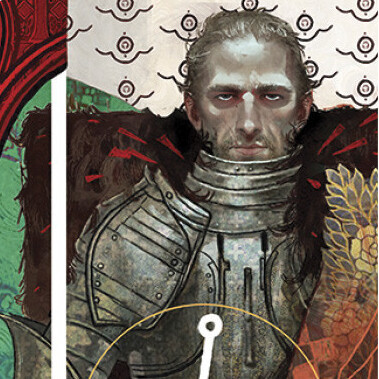


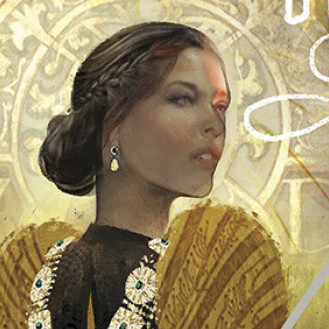

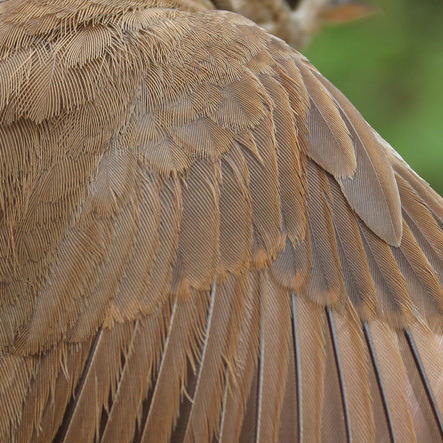
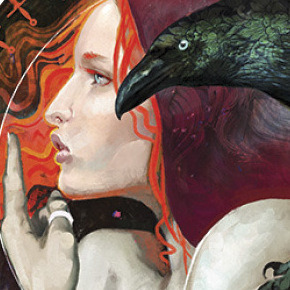

Daemon Age: Inquisition
Advisors
Cullen Rutherford & Aeltjedemuis - (Mabari/Pittweiler) Cullen, ever the Fereldan, settled quite patriotically (and young) as a robust and strong dog. Aeltje is often seen next to the stern-faced Commander, wagging her tail ferociously. Pitties can be either aggressive or gentle depending on who trains and nurtures them. Their bond is tender ever since weaning off Lyrium. It is unbearable for her to leave his side.
Josephine Montilyet & Agapito - Bluestreak cleaner wrasse (Labroides dimidiatus) Agapito sits within a fishbowl on the ambassador’s desk, or floats within a water-filled bauble hanging around the Antivan’s neck. He can put on quite an attractive show, dancing about, and revels in practical and mutual cooperation.Yet beyond the flashing scales lies a cunning mind. Like Josephine, the cleaner wrasse always finds the benefit in a transaction.
Leliana & Sharon - Common nightingale (Luscinia megarhynchos) Why do you think they call the spymaster Lady Nightingale? Actually, the nickname is purely incidental. While malcontents are focused on the frightening Right Hand, Sharon works away chipping foes down bit by bit, singing beautifully all the while. She can be seen under her human’s hood, or sometimes at an unnervingly far distance.
One of the craziest things about Dragon Age (and this might help those of you who don’t go here kind of understand what people are yelling about in the coming months) is its lore. But I don’t mean that in the way you’re probably thinking.
I mean, quite literally, the way it presents its lore to you. In picking up notes and books as you go along and sifting through the codex, the game effectively asks you to act as an anthropologist. You’re met with a host of primary and secondary sources, some many hundreds of years apart from one another, written by anyone from the highest Chantry scholar to John Farmer, and you’re meant to constantly be questioning every piece of information you’re given. What biases are present in what I’m reading? What is fact and what is complete fabrication and what is, potentially, a slightly twisted version of a fact? How does one source potentially contradict another? The lore is one giant mystery-puzzle that you get to piece together across three games, and what conclusions you draw are going to be entirely different from someone else’s, and so on.
And yet, the series still does something even cooler than any of that. You realize, at a certain point, that this idea you have been engaging with on a meta-level — this idea that history is biased and fallible, that it’s written by colonizers and conquerers, genocidal racists and religious zealots, that the ability to control historical narrative is the prize you win for spilling the most blood — that idea is one of, if not perhaps THE most important, overarching theme of the series. The way that we remember history — what we remember and what we don’t, and why — and the impact that has on people on a sociological, political, cultural and psychological level, on both a macro and micro scale. It’s the entire thesis of the series’ main villain’s whole motivation.
And there’s gonna be a lot of people that don’t care about all that but me personally it makes me want to gnaw on a cinder block and scratch at my walls
-
 brainfullofhotsauce reblogged this · 3 weeks ago
brainfullofhotsauce reblogged this · 3 weeks ago -
 brainfullofhotsauce liked this · 3 weeks ago
brainfullofhotsauce liked this · 3 weeks ago -
 xiiishadesofgrey reblogged this · 1 month ago
xiiishadesofgrey reblogged this · 1 month ago -
 death-rebirth-senshi reblogged this · 2 months ago
death-rebirth-senshi reblogged this · 2 months ago -
 mads-indie liked this · 2 months ago
mads-indie liked this · 2 months ago -
 14w41 reblogged this · 2 months ago
14w41 reblogged this · 2 months ago -
 reverienne liked this · 3 months ago
reverienne liked this · 3 months ago -
 universalundershocks liked this · 3 months ago
universalundershocks liked this · 3 months ago -
 unidentifiedwhistlingobject liked this · 4 months ago
unidentifiedwhistlingobject liked this · 4 months ago -
 voxaris reblogged this · 4 months ago
voxaris reblogged this · 4 months ago -
 chadsuke reblogged this · 4 months ago
chadsuke reblogged this · 4 months ago -
 selfish-cat reblogged this · 4 months ago
selfish-cat reblogged this · 4 months ago -
 cat-astrophe4 liked this · 4 months ago
cat-astrophe4 liked this · 4 months ago -
 cat-astrophe4 reblogged this · 4 months ago
cat-astrophe4 reblogged this · 4 months ago -
 valiantpastabakeryllama liked this · 5 months ago
valiantpastabakeryllama liked this · 5 months ago -
 seekerwitch166 reblogged this · 5 months ago
seekerwitch166 reblogged this · 5 months ago -
 0-ac-0 liked this · 5 months ago
0-ac-0 liked this · 5 months ago -
 czokokoko reblogged this · 5 months ago
czokokoko reblogged this · 5 months ago -
 thunderwhenhepurrs liked this · 5 months ago
thunderwhenhepurrs liked this · 5 months ago -
 anwirshifts liked this · 5 months ago
anwirshifts liked this · 5 months ago -
 axiomsend liked this · 5 months ago
axiomsend liked this · 5 months ago -
 hera-defender-number1 liked this · 5 months ago
hera-defender-number1 liked this · 5 months ago -
 calpernia-for-archon liked this · 5 months ago
calpernia-for-archon liked this · 5 months ago -
 ishgard liked this · 5 months ago
ishgard liked this · 5 months ago -
 eorzeanflowers reblogged this · 5 months ago
eorzeanflowers reblogged this · 5 months ago -
 eorzeanflowers liked this · 5 months ago
eorzeanflowers liked this · 5 months ago -
 clockworkdragonffxiv reblogged this · 5 months ago
clockworkdragonffxiv reblogged this · 5 months ago -
 crimboscrungly reblogged this · 6 months ago
crimboscrungly reblogged this · 6 months ago -
 crimboscrungly liked this · 6 months ago
crimboscrungly liked this · 6 months ago -
 urbanxfantasy liked this · 6 months ago
urbanxfantasy liked this · 6 months ago -
 zephyronthewind reblogged this · 6 months ago
zephyronthewind reblogged this · 6 months ago -
 nugguette reblogged this · 6 months ago
nugguette reblogged this · 6 months ago -
 companionquest liked this · 6 months ago
companionquest liked this · 6 months ago -
 xavierpon2te reblogged this · 6 months ago
xavierpon2te reblogged this · 6 months ago -
 azutara reblogged this · 6 months ago
azutara reblogged this · 6 months ago -
 azutara liked this · 6 months ago
azutara liked this · 6 months ago -
 assassinwolf189 reblogged this · 6 months ago
assassinwolf189 reblogged this · 6 months ago -
 catloverkid00 liked this · 6 months ago
catloverkid00 liked this · 6 months ago -
 call-me-oluss reblogged this · 6 months ago
call-me-oluss reblogged this · 6 months ago -
 rooootttbeeerrrrr liked this · 6 months ago
rooootttbeeerrrrr liked this · 6 months ago -
 theunsinkablesappho reblogged this · 6 months ago
theunsinkablesappho reblogged this · 6 months ago -
 boxofanger liked this · 6 months ago
boxofanger liked this · 6 months ago -
 generalmeowskers liked this · 6 months ago
generalmeowskers liked this · 6 months ago -
 dammithawke reblogged this · 6 months ago
dammithawke reblogged this · 6 months ago -
 stenfalk reblogged this · 6 months ago
stenfalk reblogged this · 6 months ago -
 sugar-free-byproducts liked this · 6 months ago
sugar-free-byproducts liked this · 6 months ago -
 phin-dicated reblogged this · 6 months ago
phin-dicated reblogged this · 6 months ago

A collection of canonical and non-canonical lore of Thedas, and archive of the amazing meta this fandom has produced. All work will be properly sourced and any use of other's work should conform to their requests. (icon made by @dalishious)
72 posts